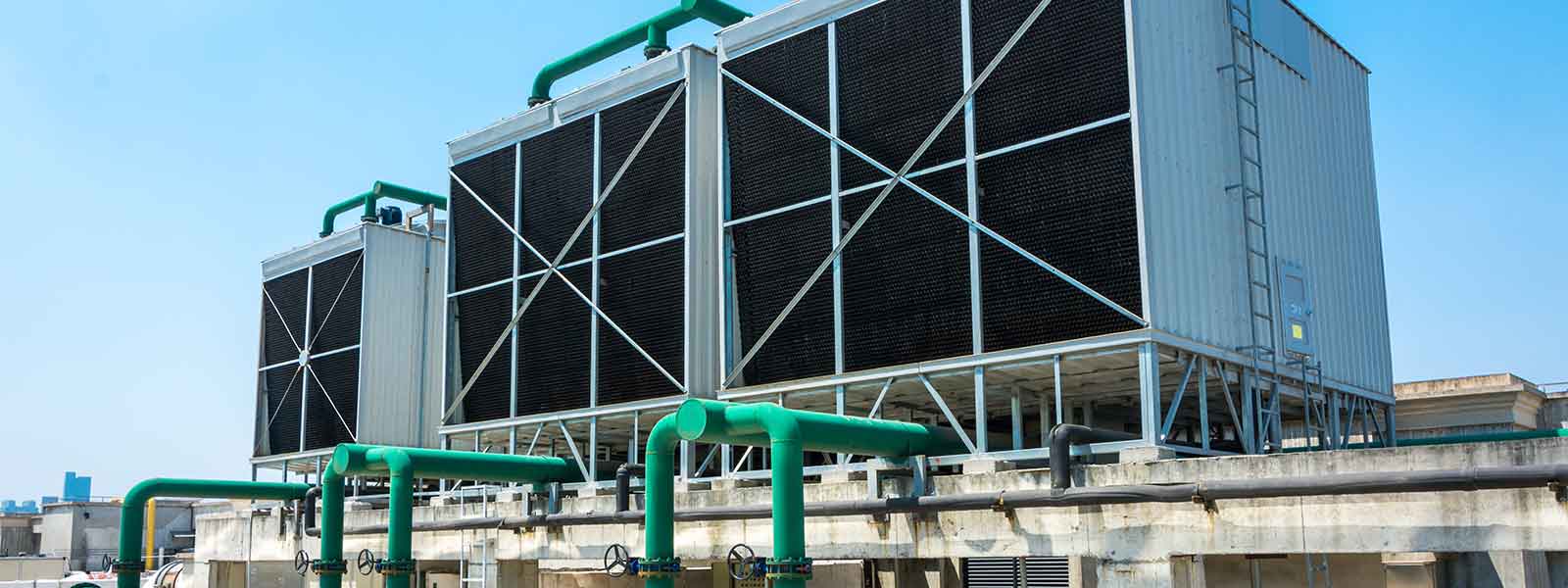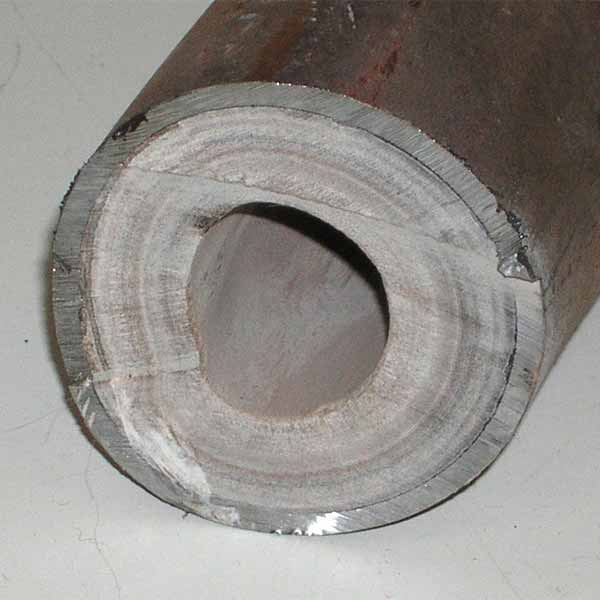
Scale Inhibitors & Dispersants
Polymeric Based Antiscalants and Dispersants
Across the country, the concentrations of the chemical components present in influent waters can vary a great deal. These varying parameters, along with individual industrial water systems and their usage of water, have brought forth a demand for multiple polymers that exhibit effective deposit control and dispersant properties. When formulating scale inhibitors into water treatment programs for boiler water and cooling water applications, several characteristics have to be met.
To begin with, polymers for water treatment should be cost-effective and they should be compatible with other common water treatment additives. They should provide control for a wide range of foulants, be highly tolerant to stressed water conditions, and they should be stable in acidic and alkaline formulations. In addition, an effective scale inhibitor should possess the following primary functionalities under a wide range of water and system conditions: act as a threshold inhibitor for common mineral scales such as Calcium Carbonate (CaCO3) and Calcium Sulfate (CaSO4), have superior properties as a crystal modifier to control deposits when the limits of threshold inhibition are exceeded, be highly effective for particulate dispersion (including difficult particulates such as iron oxides and hydroxides) and exhibit exceptional performance as a stabilizer of calcium phosphate, zinc, and iron.
Bio-Source carries a complete line of scale inhibiting & dispersing polymers utilized in formulations designed to control the deposition of organic and inorganic foulants in industrial water systems and other applications such as the oilfield and papermaking industries. The high-performance polymers that we distribute are manufactured by BWA Water Additives, Dow/Rohm & Haas, International Specialty Products (ISP), SNF, and other various manufacturers. In general, we have a full selection of homopolymers, copolymers, terpolymers, and silica polymers available to our customers with excellent pricing.
Outlined below is a list of the various polymer chemistries that we provide:
Homopolymers
Polyacrylic Acid (PAA)
Acrylic homopolymer that is a general purpose scale inhibitor and is effective in inhibiting the precipitation of calcium carbonate, calcium oxalate, calcium sulfate, barium sulfate, and other low solubility salts. Applications include open recirculating cooling systems and other types of cooling circuits, dispersant for boiler sludge control, and oilfield water treatment for preventing scale in both formation and production equipment. Acceptable additive where discharge waters are required to contain little to no phosphorus.
Phosphinocarboxylic Acid (PCA)
Carboxylic homopolymer scale inhibitor. Acts against the precipitation and deposition of Calcium Carbonate, Calcium Sulfate, and other sparingly insoluble salts. Thermally very stable, even in high-pressure boilers. Provides greater flexibility in developing multiple antiscalant programs for a variety of scales found in boiler systems, food plants, and cleaning applications. Primary applications are scale inhibition in open recirculating cooling systems, dispersant for all types of cooling systems, and dispersant for boiler sludge control.
Polymaleic Acid (PMA)
Low molecular weight homopolymer of maleic acid that is a general purpose scale inhibitor/dispersant for the effective control of Calcium Phosphate, Calcium Carbonate, Calcium Sulfate, and silt. It performs well in high hardness and high TDS systems, it is stable at all pH levels, and it is also free of phosphorus which is an added advantage in regard to maintaining compliance with discharge waters. Applications include cooling and retort water, boilers and steamlines; and is also FDA and USDA approved.
Copolymers:
Acrylic Acid/2-Acrylamido-2-Methylpropane Sulfonic Acid (AA/AMPS)
A sulphonated copolymer with a carboxylate group that is highly effective as an anti-scalant and dispersant in process water applications. It acts as a threshold inhibitor to enhance solubility, and functions as a crystal modifier when threshold inhibition is exceeded. The combination of these two chemistries provide control of Calcium Carbonate, Calcium Sulfate, Calcium Phosphonate, colloidal iron stabilization, and dispersion of iron oxides and hydroxides. Applications include cooling water in stabilized phosphate and stabilized phosphate/zinc programs, boiler water, and all organic programs where it serves as an aid to corrosion inhibitors.
Phosphono & Carboxylic Acid Copolymer (POCA)
Belclene 440 is a multifunctional organic polymer specially designed to replace existing copolymers in formulations to gain a more cost-effective water treatment program. It allows the unique combination of polymer and phosphonate functionality within the same molecule to be more fully exploited by formulation specialists. It has halogen stability and can be used in all organic, phosphate and low level zinc formulations – providing scale control, dispersion, and corrosion inhibition. It is designed for use in open evaporative cooling systems.
Phosphinocarboxylic Acid/2-Acrylamido-2-Methylpropane Sulfonic Acid (PCA/AMPS)
A sulfonated carboxylic acid copolymer that is a deposit control agent for Calcium Phosphate and Calcium Carbonate fouling, and can be used to improve the performance of phosphate, polyphosphate, phosphonate and zinc based water treatment formulations. This copolymer is highly effective for Calcium Phosphonate and Zinc stabilization, it is a moderate corrosion inhibitor for mild steel, and is compatible with halogens. Effectively disperses iron, clay, and zinc deposits, and is used extensively in cooling water systems worldwide in combination with polyphosphate, phosphonates and zinc; and as a dispersant for boiler sludge control. It is also used as a dispersant and scale inhibitor in the pulp and paper production process.
Terpolymers
Acrylic Acid/Ethyl Acrylate/Vinyl Acetate (AA/EA/VA)
A maleic acid terpolymer used in cooling water applications for calcium carbonate scale inhibition. It provides threshold inhibition, crystal modification, and is an effective stabilizer of zinc in solution to provide better corrosion control. It is not affected by chlorine and other oxidizing biocides under normal use conditions. It also has FDA approval for use in pulp production where the paperboard may contact food. This highly effective calcium carbonate scale inhibitor is considered a “green” chemistry and is a perfect additive to incorporate into formulations for low environmental impact. It outperforms other competitive green inhibitors, such as Polyaspartate (PASP) and Carboxymethyl Inulin (CMI). It is phosphorus free (which equals no PO4) and it has a very high degree of biodegradability – 55% under OECD 302B test for fresh water.
Acrylic Acid/Propene Amide/2-Acrylamido-2-Methylpropane Sulfonic Acid (AA/AM/AMPS)
Acumer 3100 is a terpolymer that exhibits outstanding dispersant properties for both dried and hydrated iron oxide, hydroxyapatite and calcium carbonate. It is an excellent stabilizer for corrosion inhibitors such as phosphate, phosphonates and zinc; and is highly resistant to breakdown in aqueous solution under conditions of high temperature, pressure and pH. Applications include cooling water programs where extremely high iron concentrations exist, as well as when high levels of phosphate or zinc are present due to the treatment of the system. It is used in boiler applications for superior sludge control, and it is an excellent iron oxide dispersant, particularly recommended for the control of hydrated iron oxide in condensate return lines.
Silica Polymer
Proprietary Multipolymer (AA/AM/AMPS with a Residual Monomer)
Primarily used in the Southwest and Hawaii, this multifunctional polymer is designed to prevent silica-based scale formation by dispersing colloidal silica, and by preventing magnesium silicate scale formation at heat transfer surfaces. Applications for this silica polymer include recirculating cooling water systems, allowing up to 300 ppm silica in the recirculating water without scale or corrosion problems. Additionally, this multipolymer exhibits superior hydrothermal stability for use in boiler water applications for controlling magnesium silicate scale.




